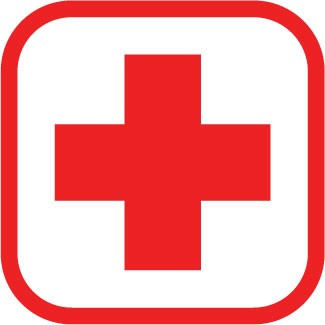According to the Australian Red Cross, Australia has the lowest rate of first aid training in the world, with less than 5 per cent of people trained in how to handle an emergency situation.
Each year, almost 500,000 Australians are admitted to hospital as a result of an injury, and around 12,000 of these people will die from their injuries.
While the majority of injuries are sustained in the home, the workplace is the second most common place Australians are injured badly enough to need to visit the hospital.
Spokeswoman for the Australian Red Cross, Amanda Lindsay, believes low rates of first aid knowledge in the workplace is due to employees having to pay for the training themselves.
“They might encourage their staff to do first aid training, but paying for first aid training, only 50 per cent of Australian workplaces do so,” she told ABC News.
“Giving someone the confidence to perform first aid duties in the workplace is important,” she said.
Knowing what to do when someone suffers from cardiac arrest is one of the most important elements of first aid training.
Each year in Australia, more than 33,000 people suffer some form of cardiac arrest, and out of those tens of thousands of people, only five to seven per cent of them survive.
This low survival rate is because the longer you delay cardiopulmonary resuscitation; the less chance there is of survival. If more than ten minutes passes without CPR, survival rates drop substantially.
“Keeping the blood flow to the vital organs and the brain is so important,” Ms Lindsay said.
“You’re there as a first responder, you’re not a paramedic, you’re not a doctor, but you’re there to respond to the incident straight away to give them the best chance of survival.”
First aid training will teach you how to respond to common emergencies in the workplace and at home, but these tips will help get you started.
Cardiac Arrest
If someone at work suffers from cardiac arrest, there should be a defibrillator available to use, and staff should be properly trained in how to operate it. Otherwise, CPR will need to be performed until emergency services arrive. CPR follows the simple process of 30 chest compressions, followed by two rescue breaths. This should be repeated at a rate of 100 to 120 compressions per minute.
Burns
According to the Red Cross, any burns should be treated by immediately running the burn area under cold water for 20 minutes. However, if the burn is bigger than the palm of your hand, you will need to get the injured person to the hospital immediately.
Choking
Contrary to popular belief, the Heimlich manoeuvre is no longer recommended if someone is choking. The best course of action is to perform five back thrusts between the shoulder blades. If this doesn’t work, perform five chest thrusts and encourage the person to cough if they’re able to breathe.
Poisons
The treatment method for poison will vary depending on the type of poison, so encouraging someone to vomit can be dangerous. Call the poison hotline on 13 16 26 straight away and you’ll be advised on how to proceed.
The Australian Red Cross offers first-aid courses nationally. Visit redcross.org.au or call 1300 367 428 for more information.
Having fully-trained first aid staff isn’t the only way you can help keep staff healthy and safe, you should also have the necessary health and safety equipment on hand, such as respiratory protection, first aid kits and medical devices. Talk to SafetyQuip about installing a lifesaving defibrillator or a compliant First Aid Kit today!

Safety Gear - Workwear - Footwear - Site Safety
Meeting your safety obligations to your workforce is a serious business. Standards evolve, and it can be tough to keep abreast of them. So it’s great to know you have a partner in SafetyQuip – a business that makes it its business to know your safety issues, and stocks all the safety workwear and PPE you will need to address them.
At SafetyQuip, we stock every kind of safety equipment and PPE, including respiratory protection, HI VIS safety workwear, height safety and skin protection. We stock safety equipment for materials handling, with ladders, platforms and elevated work spaces. And we’ve got you covered for personal protective equipment for the feet, with waterproof and steel capped work boots, plus a range of accessories.
Read More